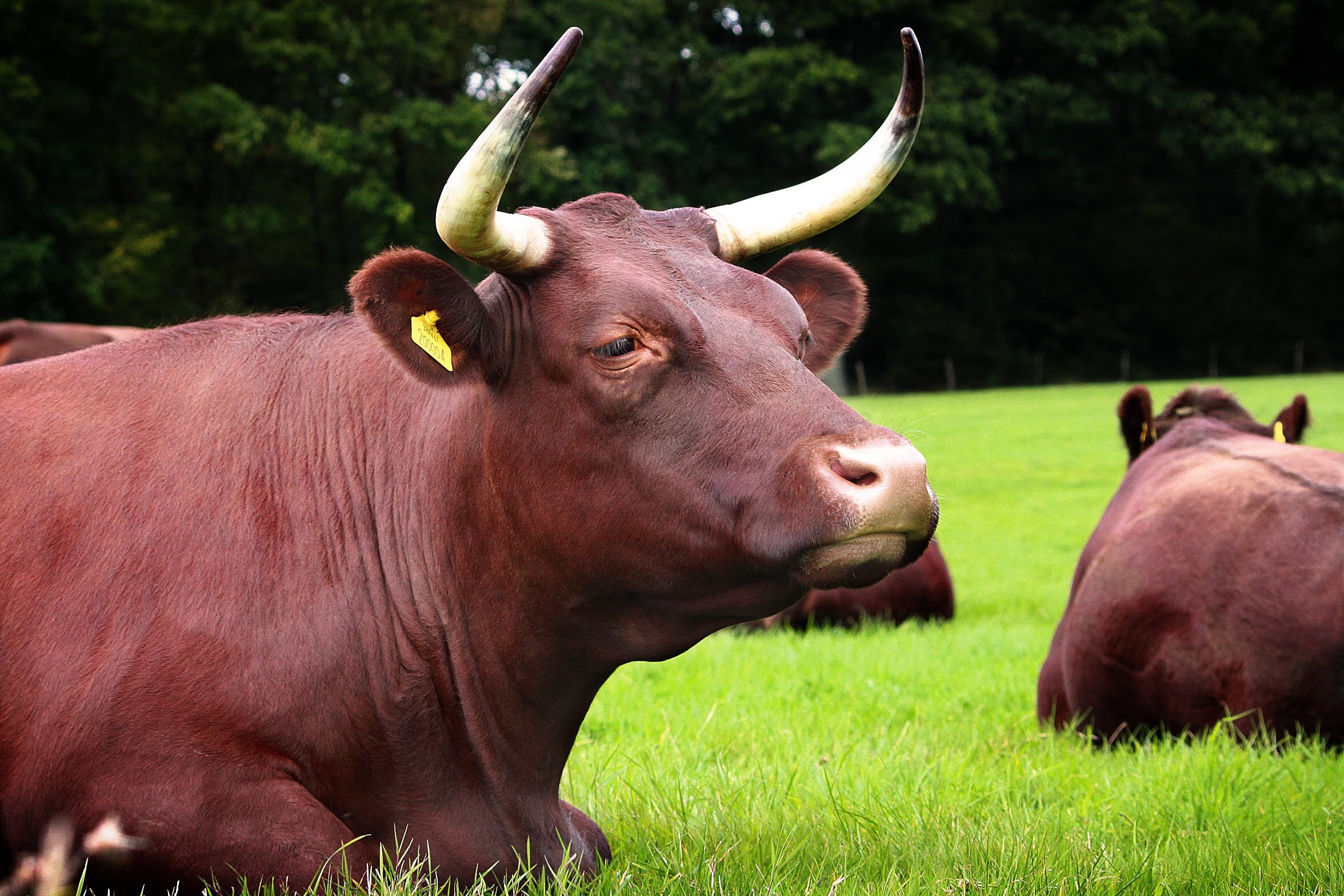Horned cows
We often find ourselves stepping back and admiring the beauty and majestic look of our cows, their horns being their crowning glory. The horns of cows ascend upwards and give an air of dignity, value and self-determination. In our experience, a cow with horns has more of these qualities than one without horns.
We have a love and respect for our animals and aim to allow them to live in a way that is as natural to them as possible. For us, it doesn’t feel right to take away their horns by disbudding at birth or genetically breeding the horns out of them.
Horns arise from a connective tissue under the scalp and later fuse to the frontal bone. This is penetrated by blood cells and furnished with nerves. The horns continue to grow throughout the life of the cow.
When the cows are lying down ruminating, Michael and I often stop and watch them; the peaceful air that they create seems to slow us down, and we often find ourselves joining them in their meditative state. When you observe cattle, it’s not long before you become aware of the individual relationship between one animal and another: friendly but also respectful of hierarchy. The hierarchy shows itself in the dominating behaviour of animals higher up the scale and the evasive behaviour of those lower down, but also the struggles between them.
We see more friendly connections when the animals are grazing and resting or when they lick each other. When trying to keep flies away they are happy to be close and often stand head to tail with one another. Both kinds of behaviour may be displayed by the same animals at different moments in time.
Why do cows have horns? Surrounding each animal there appears to be an invisible bubble; its “individual space”. Encroachment into this space will either lead animals lower down the hierarchy to flee or set the scene for a struggle. Horned animals are almost always higher up the ladder than those that are dehorned. Older animals are normally higher up than younger ones.
Problems very rarely arise between horned cattle out on the pasture. In loose housed conditions however, struggles and fights among horned cattle are frequent, especially if space is tight. This leads to stress and a higher risk of injury. Therefore, it is important to ensure that the cows have plenty of space during winter housing so that they are happy and peaceful.
Apart from the perceived risk posed to people working on farms, the move from tethered housing to loose housing, where cattle are free to move around in an enclosed space, motived the recommendation for removing horns.
It is now common practice to disbud calves before they are four weeks old. It is done by using a searing iron (700ºC) and must be carried out under local anaesthetic by a trained professional to cause as little stress as possible. The removal of the horn structure has a noticeable influence on the form of the developing skull. The frontal bones of dehorned animals are more concave in shape, are drawn forward and there is a smaller distance between the eyes.
To avoid the stress of disbudding, more and more effort is being made to breed genetically hornless animals. In breeding hornless animals however, no account is taken of what horns actually mean to the cow.
Breeding for hornlessness not only effects the individuality of an animal but the entire breed is affected. Hornlessness is a dominant genetic trait, which means it can be utilized to breed horns out of an entire breed of cattle. Once a breed has become hornless, it cannot be reversed, and these breeds have not existed long enough for us to know the consequences of that.
Leaving the natural horns on our animals means that we work with them in an attentive and respectful way which we find leads to mutual respect. This is the basis of all good working relationships.


